Whether you like to lock your heel in for the descent or keep it free and drop the knee, these Editors’ Choice ski bindings are built to help you earn your turns and crush on the way down.
Categories
AT Bindings
ATK Raider Evo
blackdiamondequpiment.com | $700 | 740g | 11, 13 RV | BRAKES (mm): 86, 91, 97, 102, 108, 120 CRAMPONS (mm): 86, 91, 97, 102, 108, 120 ($75-85)
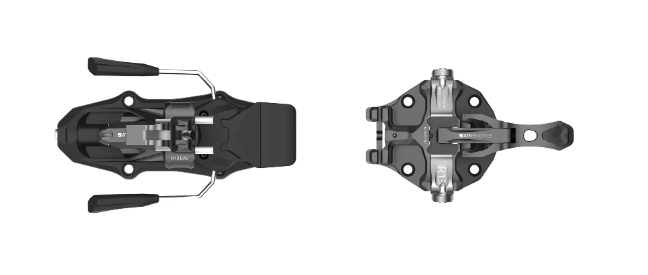
The ATK Raider Evo turned heads almost as quickly as testers turned the new heel piece from walk to ski mode. Unlike previous ATK bindings that used a button to lock and release the brakes, the Raider Evo’s heel catches the brake as it spins. “Transitions are easy,” one tester said of this minimalist aluminum, stainless steel and polyoxymethylene (strong plastic) binding.
One tester was slightly nervous, saying, “Brakes are easy to retract but seem like they might deploy inadvertently,” but he had no complaints about the downhill performance. The Raider Evo boasts 14 millimeters of elastic travel in the heel and has an adjustable release value in the toe that allows the wings to flex. ATK says the toe and heel work together to allow the ski to flex more naturally. Testers backed the claim, awarding an average of 6/7 for downhill performance and 5/7 for power transfer, lateral control and ski-to-snow feel. “Easy skiing. Solid, firm, positive engagement,” a 220-pound, 6’4” tester summarized.
On the skintrack, the Raider Evo received top marks for stride length, but testers were split on ergonomics. One tester understood that, at 740 grams, you’re going to lose some features. He called them, “Lightweight, low profile, easy to use.” Two others wanted more. “Risers are small, can be hard to flip up with your pole,” said a picky tester, though he conceded that, when in the right position, the three different heights were ideal. The second added, “They take some effort to get out of the toe due to the small area for your pole. Difficult to lock out and pull up the lever.”
Where to buy
Marker Cruise 12
markerbindings.com | $650 | 950g | 6-12 DIN | BRAKES (mm): 90, 105 CRAMPONS (mm): 74, 84, 90, 105, 120 ($120)
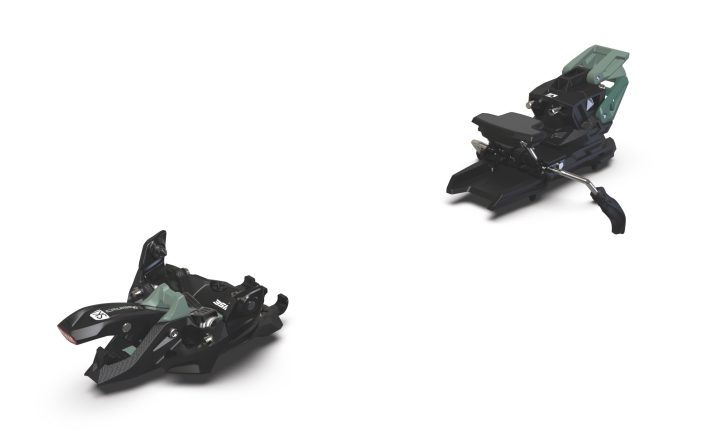
Marker had a hole in its AT binding line. At one end, the freeride-inspired, 2,300-gram behemoth Duke PT. On the other, the fly weight Alpinist, which testers have historically found a bit foreign and finicky for the newly initiated. Then there’s the Kingpin, which, while bomber and reliable, isn’t ideal for all day assaults.
Enter the Cruise 12, built to be simple and easy to use for beginners and intermediates but powerful enough for hard chargers. “A smooth, reliable ride,” a freeride coach said. “With its wider platform and rubber stopper at the toe, it snaps to your boot with nearly zero effort or misfires.”
Transitioning to the climb, testers found, was easy. After rotating the heel piece, step down to lock the brakes up. On the ups, testers noted the riser heights of 8 and 12 degrees provide just the right amount of lift for any ascent, a great improvement over the Alpinist, which only has one climbing bar. At the top, “the heel piece, unlike some other bindings, takes little effort to twist 180 degrees between ski and tour mode,” a veteran tester described.
With plastics sourced from recycled and plant-based materials, the Cruise has a bit of a green story, too. Per Marker, the Cruise’s carbon footprint is 63% less than it would be if made from more conventional materials like reinforced Polyamide. By replacing certain traditionally metal pieces with plastic at the toe frame, risers and heel turret, the brand claims, the Cruise skis damper, too.
Marker also offers a Cruise 10 ($599).
Where to buy
Salomon MTN Summit 12 BR
salomon.com | $600 | 790g | 6-12 RV | BRAKES (mm): 80, 90, 100, 110, 120 CRAMPONS: Dynafit compatible
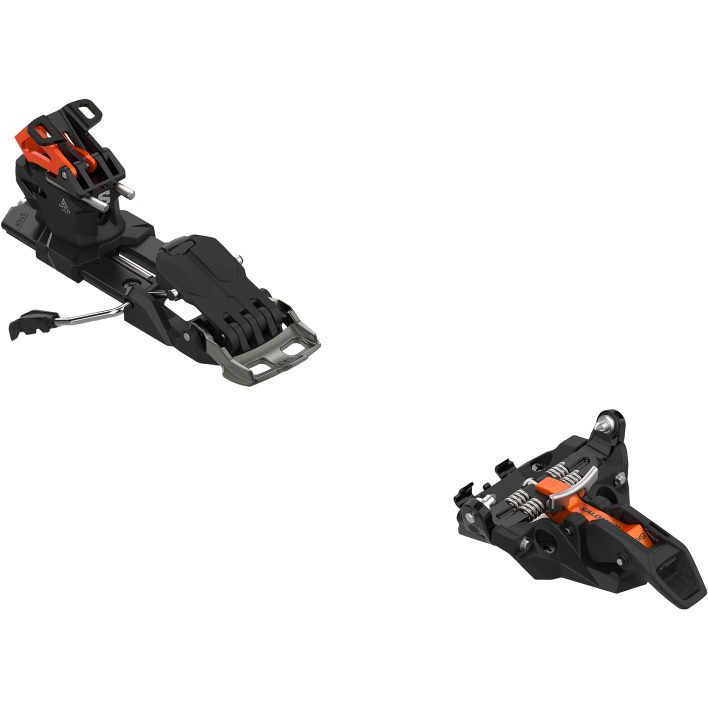
Salomon has offered two staple touring bindings for years: the alpine-inspired Shift and the tech-toed MTN Pure. This year, the brand found a middle path in the MTN Summit, a tech binding with 17 millimeters of lateral elastic travel.
The elastic travel comes from a spring in the heel, which Salomon calls the AutoFlex system. “The new elastic travel created a smooth, true alpine binding snow feel. Incredible power transfer,” a gangly tester who can flex a ski said. The heel piece still uses the Pure’s U-shaped pins, but with a slight upgrade. While the Pure’s release value was adjusted by swapping out the U pins, a screw adjusts the Summit.
Despite all its bells and whistles, the MTN Summit clocks in at just 10 grams more than the pared-down MTN Pure. Salomon achieves those weight savings by swapping aluminum for a lighter fiberglass-infused plastic in the toe plate and heel casing. “Durable construction that inspires confidence,” said a tester with a penchant for breaking gear. “These are very well thought out and clever.”
When testers stepped onto the skintrack, they noted a few downfalls. First, a Teton-based tester griped about the lack of a true flat mode. Second, a Montanan had trouble flipping the heel risers, explaining, “I wish the risers had springs and were snappier.” A third tester thought the others were too nitpicky. He proclaimed the toe piece the most ergonomic of the test and, when that fact is coupled with the downhill performance, he summarized, “The only negative is that I don’t have any on my skis … yet.”
Marker Kingpin 13
salomon.com | $700 | 1,430g | 6-13 DIN | BRAKES (mm): 75-100, 100-125
CRAMPONS (mm): 74, 84, 90, 105, 120 ($120)

The Kingpin is like a mullet: tech toe in the front, alpine heel in the back. “The toe stop makes entry significantly easier,” a tester said of the rubber pad behind the lever and two slightly raised metal plates under the toe. The heel piece is similar to Marker’s freeride alpine bindings, but with two heel risers and a walk mode. “Unlike other heavy-duty bindings, you can transition with skis on by flipping the walk/ski mode lever,” a tester said after a quick transition. “Risers are very easy to use.” Unsurprisingly, the Kingpin garnered power transfer and lateral control scores of 6/7 from testers, but a Wasatch tourer wasn’t sold on it as a quiver of one. “I wouldn’t fully trust this on resorts or as a 50/50 setup,” he said, calling it “a heavy binding for touring.”
Where to buy
Tele Bindings
Voilé TTS Transit
voile.com | $450 | 1,100g | BRAKES: N/A | CRAMPONS (mm): 96, 115, 130 ($150)
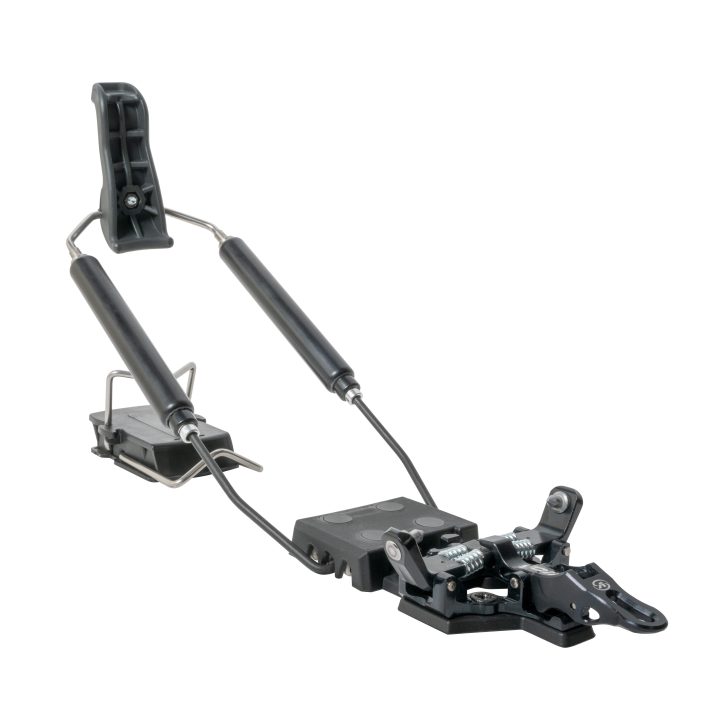
This is the binding backcountry telemarkers have dreamed of ever since their alpine counterparts went Dynaficient. Voilé’s TTS is simple, adjustable and, when the cables are removed in uphill mode, the lightest telemark touring binding commercially available. It pairs a Voilé branded Plum tech toe with a cable attachment block that allows fast adjustment of the cable activity level in three increments (low, medium, high). There’s also the option to remove Voilé’s classic cable assembly (hooks, springs, yoke, lever) to reduce drag weight by half in the skintrack. The simplicity of the design implies durability. All the parts under stress are metal, and the eight-hole mounting pattern won’t let go unless you pair it with a telephobic ultralight ski. To use this binding you need an NTN boot with tech inserts in the toe.
Where to buy
22 Designs Lynx
twentytwodesigns.com | $560 | 984g | BRAKES: N/A
CRAMPONS (mm): 90, 95, 102, 110, 115, 120 ($71-86)
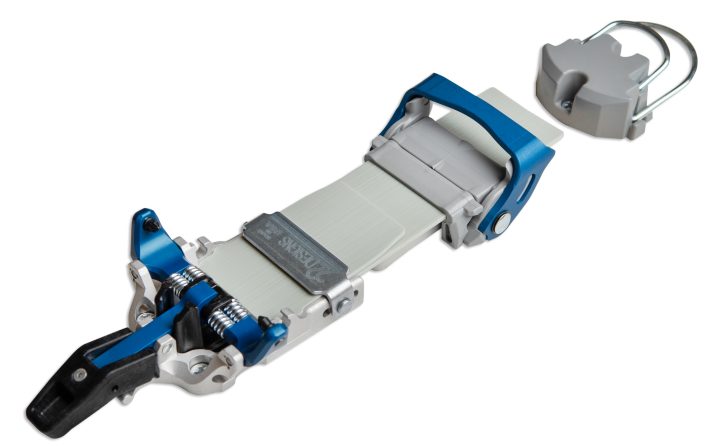
Two-pin touring efficiency blends with plenty of power for turns in combat conditions in this cool cat. The Lynx employs a pair of compression springs underfoot but what makes it different from all other felines are the composite flex plates that act like leaf springs delivering instantaneous tele engagement, even faster than the Outlaw X. There is a metal strap across the top of the flex plate to adjust activity levels, but the differences between fore and aft positions is subtle. For a macro adjustment, change flex plates. Many find the standard plates to be too active; check your ego and consider using soft plates instead. In tour mode these are mostly a dream, but if you skin low angle without a climbing post, in deep snow, the claw is known to “occasionally” grab the second heel without permission. Annoying but not a deal breaker. These also require an NTN boot with tech inserts in the toe.
Where to buy
22 Designs Outlaw X
twentytwodesigns.com | $470 | 1,592g | BRAKES (mm): 80, 95, 110, 125
CRAMPONS (mm): 90, 95, 102, 110, 115, 120 ($80-96)
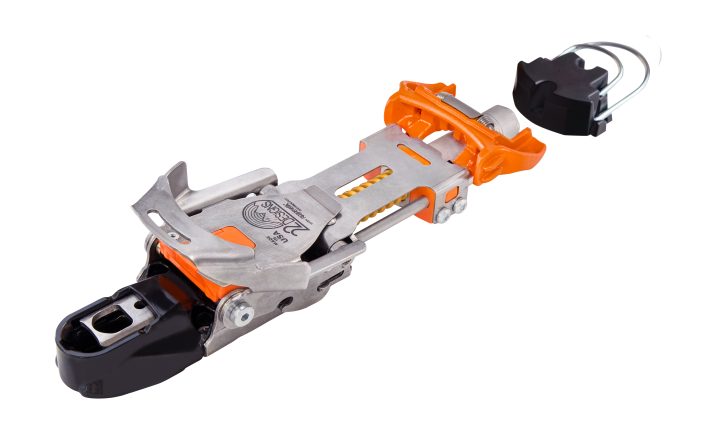
Whether you’re just learning the tele dance, or transitioning to NTN boots from duckbills, the Outlaw X is the no-brainer binding choice. The toe cage means it’s compatible with any NTN boot. As a brakeless, step-in binding, it’s arguably even easier to get into than a traditional alpine resort binding. If you add the optional brakes, you also add a bit of fiddle to the step-in routine, but nothing that practice can’t overcome. Buyer beware, the brakes do not retract inside the ski width when raised which means they can get hooked on each other when skiing or skinning. The same classic 22 Designs mode switch toggles between a locked toe for turns and a frictionless pivot for touring. Power comes from a single compression spring that can be micro-adjusted by dialing the pretension up or down. Larger adjustments can be made by swapping between soft, standard and stiffy springs.
Where to buy
Published here are 7 of 10 touring bindings we reviewed in our 2024 Gear Guide. To check out the comprehensive range of boots we wrote about, or to learn about binding compatibility, how to pick a ski boot and more, pick up a copy of the 2024 Gear Guide, available in print and PDF versions. For the rest of our 2024 Editors’ Choice reviews published online, visit our gear page.
*Affiliate link disclaimer:
At Backcountry Magazine, we are committed to providing you with honest and informative gear coverage. To support our work and continue delivering quality content, we are including affiliate links in our reviews. Partnerships with retailers are separate from coverage, ensuring that our reviews remain unbiased. These links help us earn a small commission if you make a purchase through them, at no additional cost to you.



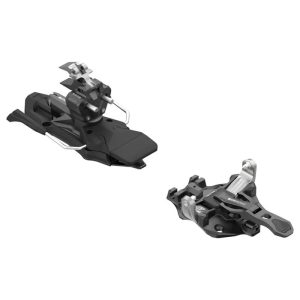
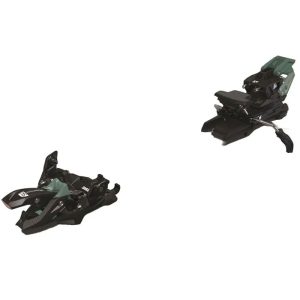
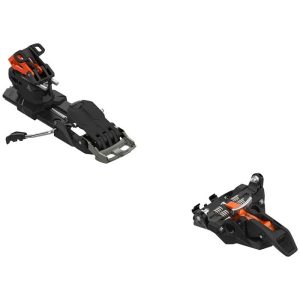
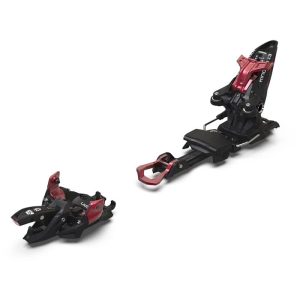
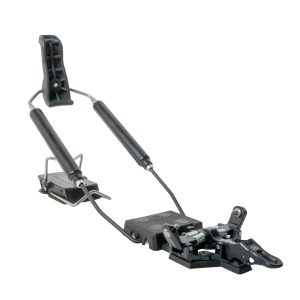
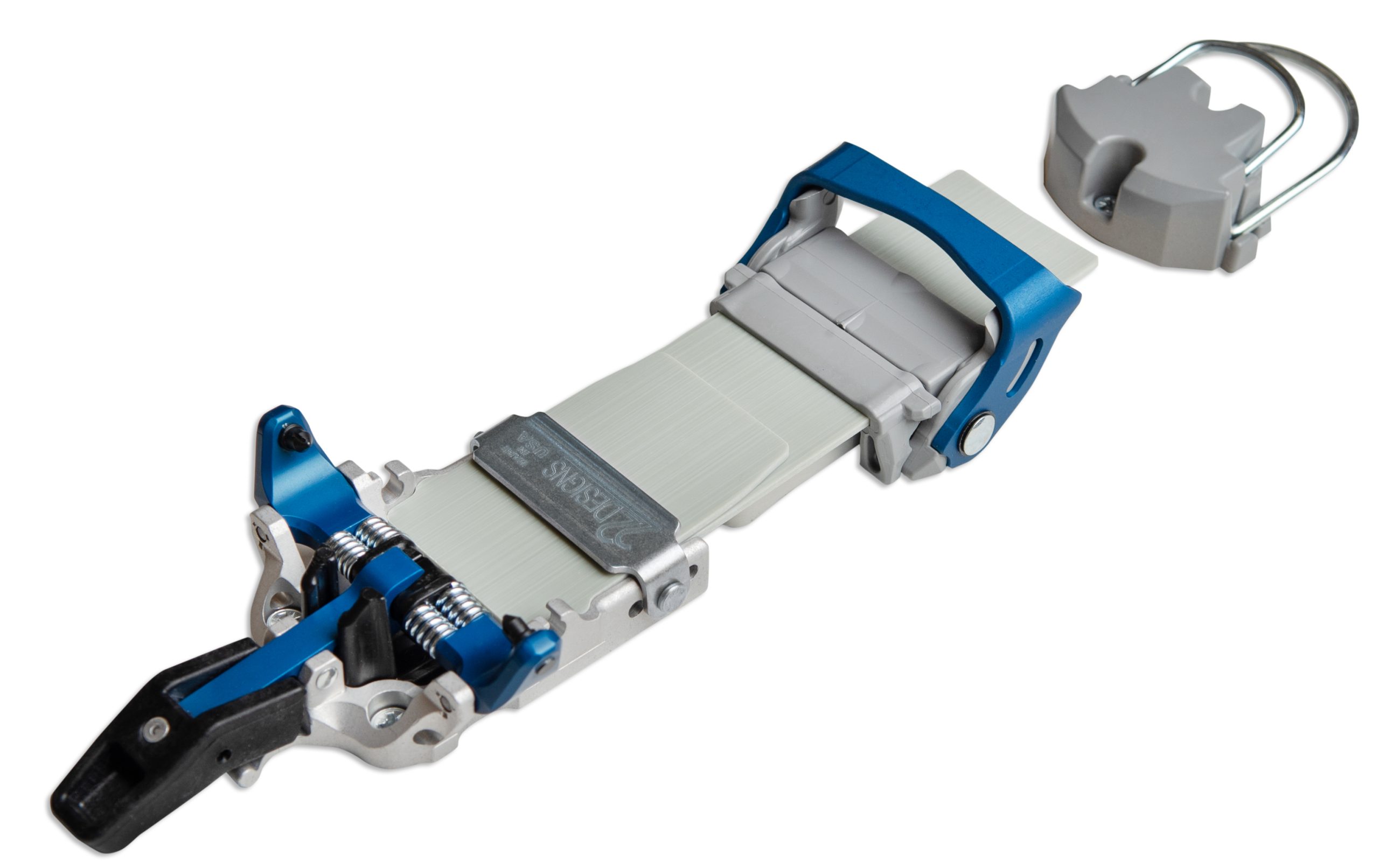
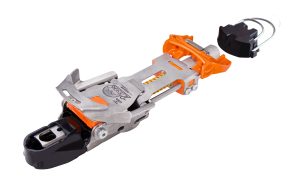
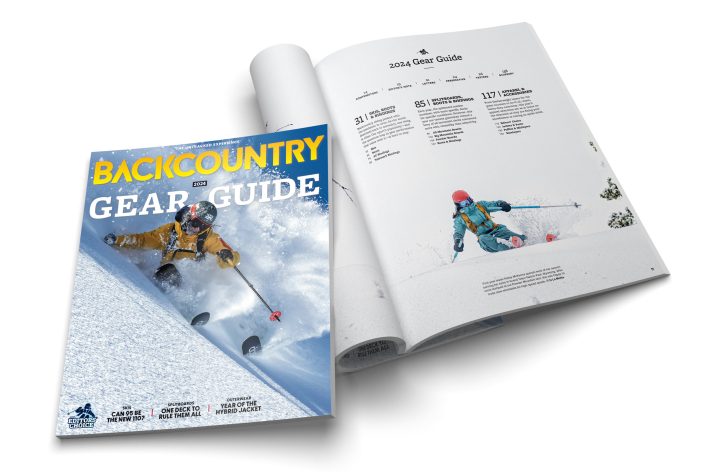








Related posts: